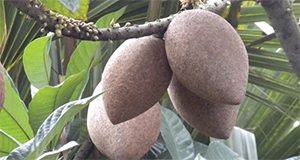Resumen
The objective of this 6-page fact sheet written by Fredy H. Ballen, Aditya Singh, Edward A. Evans, and Jonathan Crane and published by the UF/IFAS Food and Resource Economics Department is to provide an estimate of the costs and returns associated with an established mamey sapote orchard in south Florida.
https://edis.ifas.ufl.edu/fe1039
Citas
Balerdi, C.F., J.H. Crane, and I. Maguire. 2008. Mamey Sapote Growing in the Florida Home Landscape. FC-30. Gainesville, FL: University of Florida Institute of Food and Agricultural Sciences. http://edis.ifas.ufl.edu/MG331.
Mossler, A.M., and J.H. Crane. 2013. Florida Crop / Pest Management Profile: Mamey Sapote and Sapodilla. Gainesville, FL: University of Florida Institute of Food and Agricultural Sciences. http://www.growables.org/information/TropicalFruit/documents/FloridaCropPestManagementMameySapoteSapodilla.pdf. https://doi.org/10.32473/edis-pi031-2013
Goenaga, R.J., and D.A. Jenkins. 2012. "Yield and fruit quality traits of mamey sapote cultivars grown at two locations in Puerto Rico." HortTechnology 22:263-267. https://doi.org/10.21273/HORTTECH.22.2.263
Morton, J. 1987. Fruits of Warm Climates. https://www.hort.purdue.edu/newcrop/morton/mamey.html
Pantin, D. 1991. "Pantin's mamey." Tropical Fruit World 2(1):12-17. https://doi.org/10.1111/j.1759-5436.1980.mp12001004.x
Unless otherwise specified, articles published in the EDIS journal after January 1, 2024 are licensed under a Creative Commons Attribution-NonCommercial-NoDerivs 4.0 International (CC BY-NC-ND 4.0) license.

